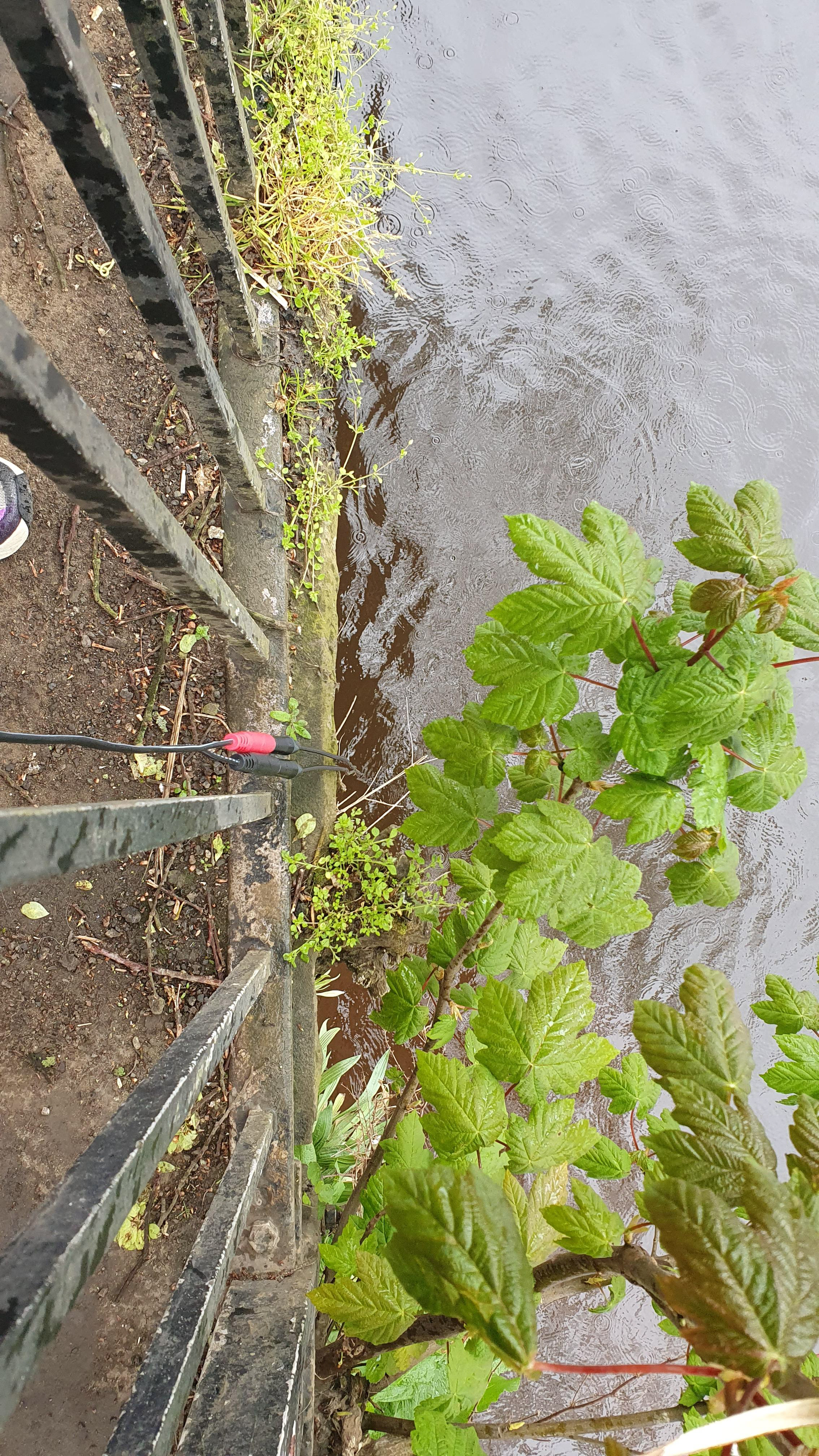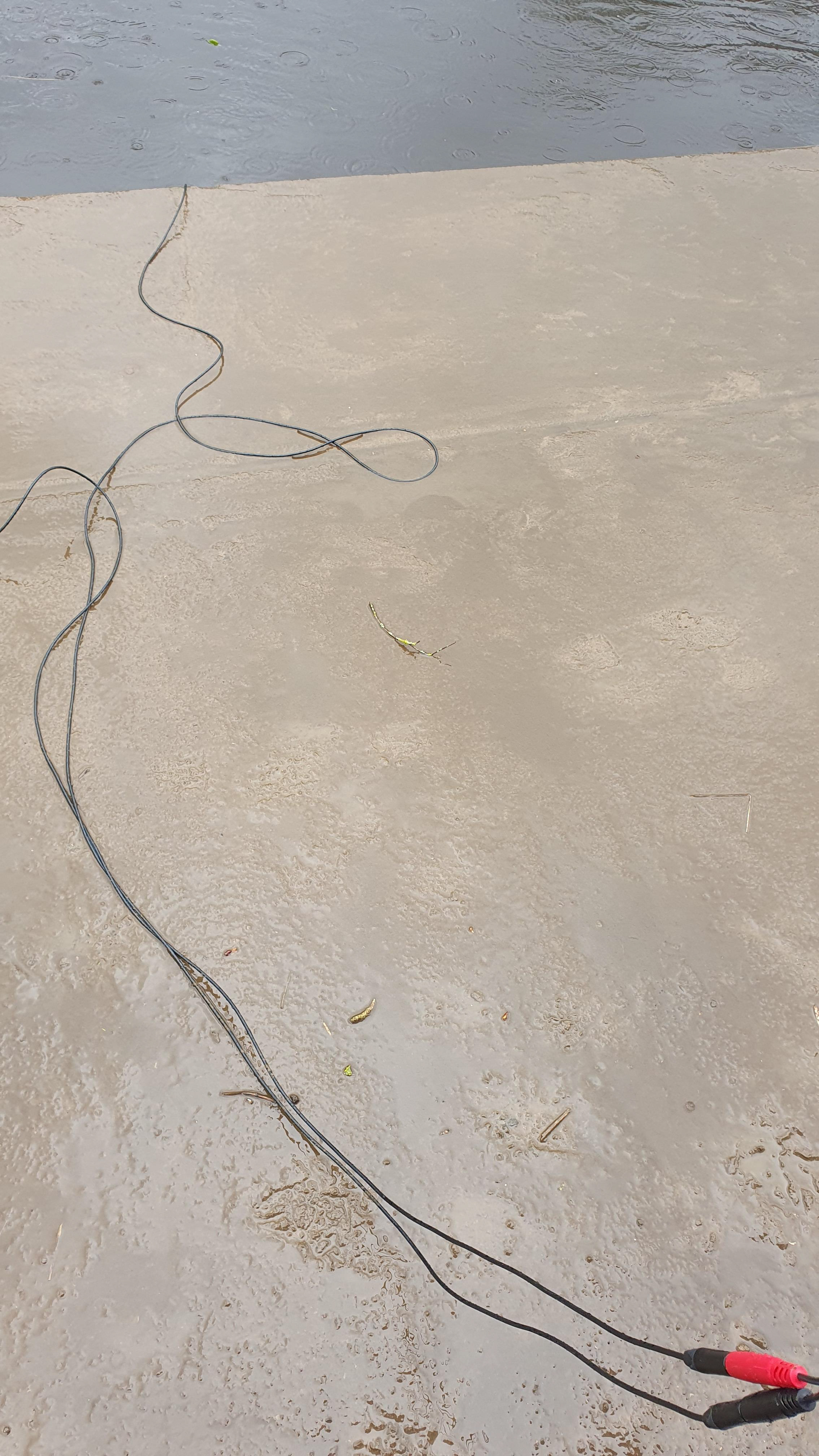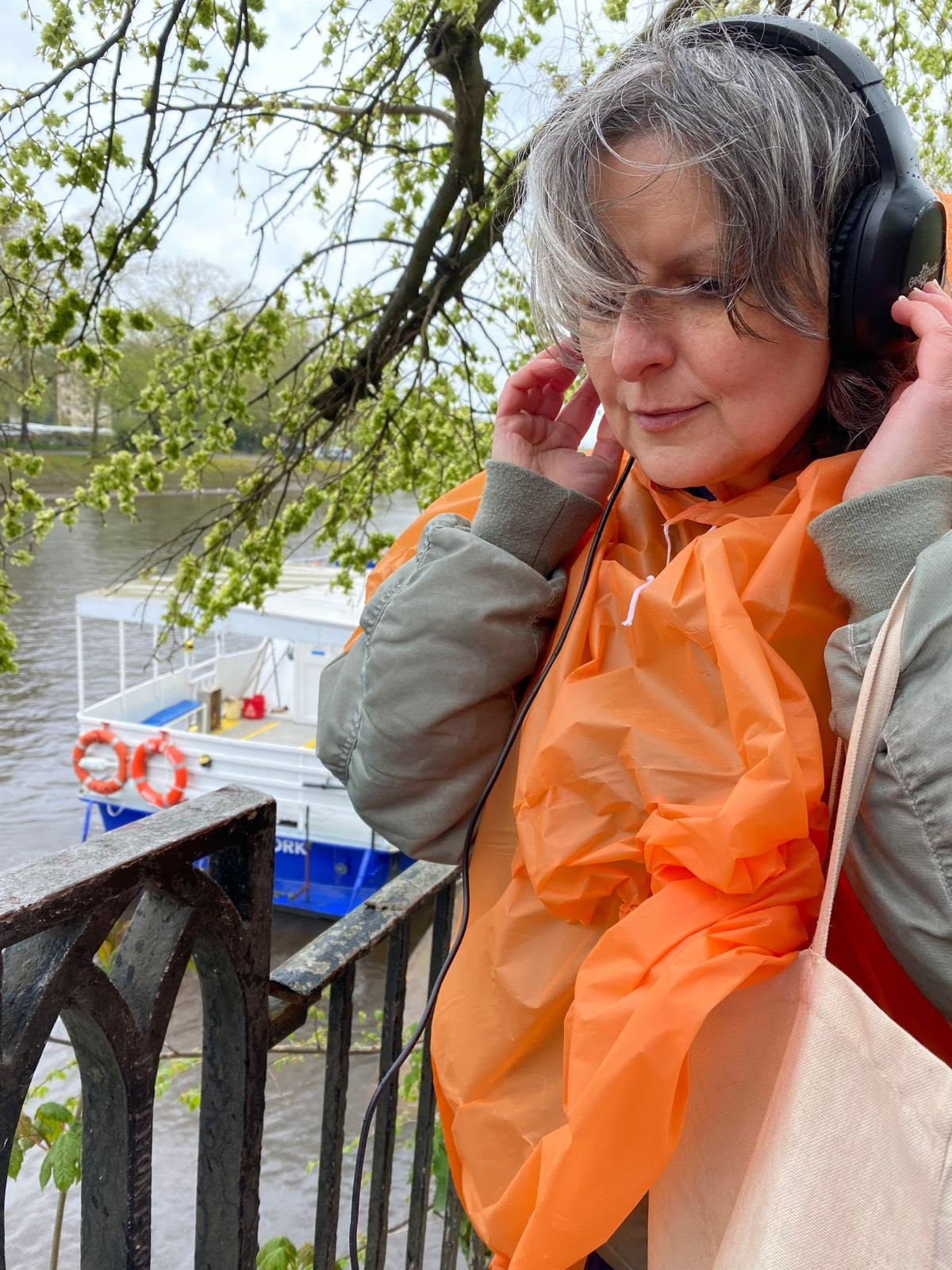





‘Song of the water’ is a collaborative audio project with migrant communities in Leicester, Bristol and York that invites them to explore waterway biodiversity through an embodied practice of bio-acoustic sensing with accessible technologies. The project is commissioned by Counterpoints and Art Reach as part of their ‘Climate Change and Displacement’ season, with support from Guy Schofield (creative technologist) and Kitty Turner (audio producer). The work brings together artistic practice, oral histories, and citizen science as a way to explore alternative perspectives on how we live with waterway commons in urban environments.
The Leicester workshops included a Summer School with young people from Soft Touch Arts Songs of the Water, a project about more-than-human relationships to waterway ecosystems. The work has been developed in collaboration with South Asian women and young people from Soft Touch Arts in Leicester over 2023-4. The resulting audio soundscape consists of oral histories and speculations about water, and underwater recordings collected using hydrophones which have been "remixed"with an original audio essay by the artist.
By listening to, recording and responding to urban river/lake/reservoir ecologies, communities are invited to creatively explore multispecies entanglements of differently polluted and remediated waterways in ways that invite their own tacit (and explicit) knowledge making practices. In inviting migrant communities, particularly those from the Global South, to engage with and respond to these ecosystems through making, storytelling and song, the project invites reflections on alternative multispecies cosmologies as a way to gather insights into how we might live more reciprocally with our water heritage. The work invites reflections on non-human agency and how we might live reciprocally with other organisms (human, microbial and otherwise) with whom we share landscapes, vital resources, and even our homes and bodies. Astrida Neimanis notes water is not simply an ecosystem, it is “a conduit and mode of connection… a planetary archive of meaning and matter” to which we return our medical and more commonplace excretions (Neimanis, 2012). This project looks to contend with the meanings that permeate these materialities: not only those of disposable culture, medicalised problem-solving, and ecological disconnect, but also those that frame issues of land and water justice, environmental racism and climate displacement.
Researchers have noted that the acoustic richness of a local animal community may serve as an indicator of biodiversity that facilitates a functional ecosystem (Maeder et al, 2019). Waterway bioacoustics is an emerging field of wildlife conservation that explores the creative possibilities of accessible and non-invasive recording technologies to monitor waterway health and engage local communities in the conservation of ecosystems (Barclay et al, 2018). The ‘acoustic data’ collected by participants will be further enriched by responses collected through ongoing workshops with the communities collecting the sound samples, as a way to create a more-than-human archive of the landscape(s). Research by the Environment Agency suggests that social impacts of proximity to poor water quality can have negative effects in terms of: the health of those coming into contact with contaminated river water; the economies associated with poor river water quality; aesthetic and nuisance impacts; and the positive benefits associated with recreational use of the river environment. They argue that it might be difficult to establish clear and direct causal relationships between deprivation and poor water quality, anecdotal and hypothetical evidence would suggest that there is a correlation between deprived communities and polluted waterways (Damery et al, 2008). This project brings together concerns about ecosystems and community heritages in a novel way, creating connections between deprived communities in the UK, and the landscape and waterways that they occupy. By furnishing diaspora communities with the knowledge, facilities and equipment they need to listen to and record waterway soundscapes using DIY audio techniques, the project not only develops an important archive of watery ecosystems for naturalists and scientists to learn from, it also encourages deeper relationships between the humans and nonhumans who inhabit them.